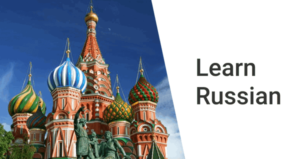Learning Russian
Russian belongs to the family of Indo-European languages. It is one of the four living members of the East Slavic languages, which are a part of the larger Balto-Slavic branch. It is native to the Russians in Eastern Europe.
Russian is an official language in Russia, Belarus, Kazakhstan, and Kyrgyzstan. It is used widely throughout the Caucasus, Central Asia, and to some extent in the Baltic States. This language is one of the six official languages of the United Nations.
Russian is the seventh-most spoken language in the world by the number of native speakers, and the eighth-most spoken language in the world by the total number of speakers. Russian is also the second-most widespread language on the internet, after English. Residents of other countries like Israel and Mongolia also form a large proportion of the population speaking the Russian language. Russian is written using the Cyrillic script; that is, Cyrillic letters constitute the Russian alphabet.
An important feature of the Russian script is the reduction of unstressed vowels. Stress which is unpredictable is not normally indicated orthographically, though an optional acute accent may be used to mark stress – such as to distinguish between homographic words or to indicate the proper pronunciation of uncommon words or names.
Russian distinguishes between consonant phonemes with palatal secondary articulation and those without the so-called soft and hard sounds. Almost every consonant has a hard or a soft counterpart, and the distinction is a prominent feature of the language.
If you are interested in learning such a fascinating language but are worried about its difficulty level and the time that will be required to learn it, things can, definitely, be worked out!






